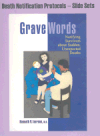|

|
Sudden,
Unexpected Death
|
Expected
Death
|
|
Approach
of death |
Immediate or over very
short time.
|
Gradual.
|
|
Nature of illness or injury
|
Acute process or acute
worsening of a stable chronic illness.
|
Chronic-usually an illness
or combination of illnesses.
|
|
Causes of death
|
Disease, suicide, homicide,
accidental, dsaster, unknown cause.
|
Usually dsease or a result
of aging processes.
|
|
Age of decedent
|
Any age, commonly young
or middle-aged adults, fetuses, and neonates.
|
Usually elderly but can
occur at any age.
|
|
Place of death
|
Usually in public, emergency
department, ICU, or work.
|
Usually home, hospital,
or nursing at home or home.
|
|
When death occurs
|
At the time of or shortly
after the acute event.
|
Months to decades after
diagnosis of chronic disease, or in old age.
|
|
Survivor reaction
|
Disbelief, shock, grief,
dsmay, disorganization, hostility, and fear.
|
Grief.
|
|
Survivor involvement
|
Usually not present at
time of death; appear gradually at death scene or ED.
|
Often present at time of
death or aware of impending death.
|
|
Site of last contact with
medical personnel
|
Public space, home, or
emergency department.
|
Hospital, home, hospice,
nursing home.
|
|
Resuscitation procedures
|
Often performed.
|
Rarely performed. Advance
directives often available.
|
|
Patient identity
|
Known or often, at least
initially, unknown.
|
Usually known.
|
|
Autopsy
|
Frequent and done by medical
examiner or coroner.
|
Rare, and when done, usually
by hospital pathologist.
|
|
Family’s immediate after-death
rituals and requirements
|
Usually not pre-arranged.
|
Often pre-arranged by individual
or family in anticipation of death.
|
 EXTRAS
EXTRAS


 The
The
 Teaching Slides on Death Notification
Teaching Slides on Death Notification
 Ethics In Emergency Medicine
Ethics In Emergency Medicine Pocket Protocols for Notifying Survivors about Sudden Unexpected
Deaths
Pocket Protocols for Notifying Survivors about Sudden Unexpected
Deaths